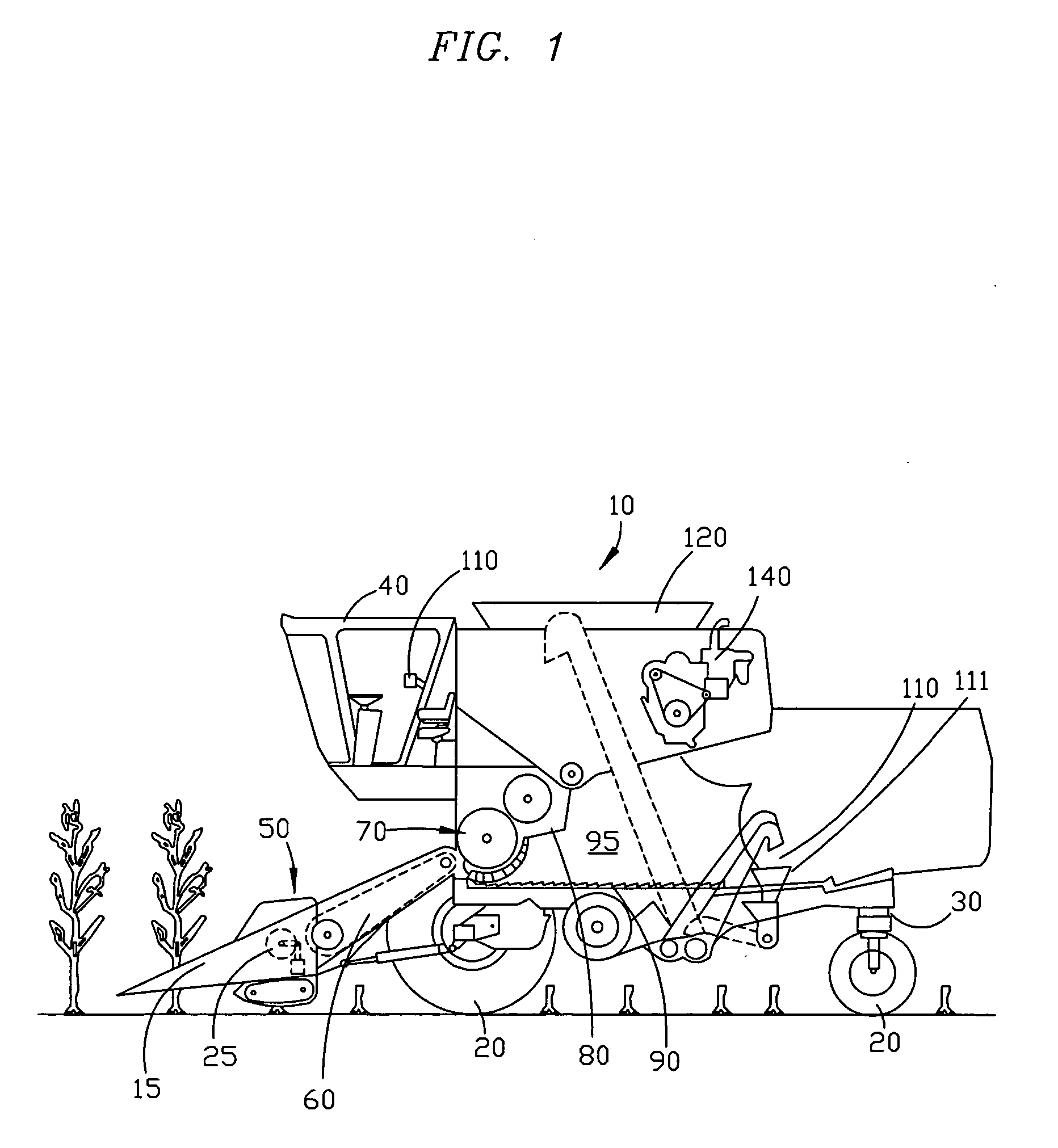Research plot harvester for continuous plot to plot grain evaluation
a plot and plot technology, applied in the field of research plot harvesters, can solve the problems of limited harvest speed, inability to allow for more, and dual harvesters like single harvesters can only harvest as quickly, so as to avoid overly tall combines, reduce the time required to complete data collection, and reduce the effect of tim
- Summary
- Abstract
- Description
- Claims
- Application Information
AI Technical Summary
Benefits of technology
Problems solved by technology
Method used
Image
Examples
Embodiment Construction
[0036] Referring to FIG. 1 there is illustrated, a row crop combine harvester which incorporates the present invention. The harvester 10 in the preferred embodiment is a John Deere model 3300, although the teachings of the invention can be applied to other harvesters as well. Seed development and production requires testing of plants, which are grown from seed, in the types of environments in which the plants are expected to be grown. Research plots which are about 20 feet long are planted in fields in various environments to test the plants response. The tests usually include measuring the grain yield and moisture. Other measurements concerning the plant health, pest and disease pressures may also be monitored.
[0037] The science of breeding requires that a large number of potential plants be tested in plots in order to locate and develop a few plants that will have all of the necessary components to produce consistent crop yield and moisture. The plots are small sections of fields...
PUM
 Login to View More
Login to View More Abstract
Description
Claims
Application Information
 Login to View More
Login to View More - R&D
- Intellectual Property
- Life Sciences
- Materials
- Tech Scout
- Unparalleled Data Quality
- Higher Quality Content
- 60% Fewer Hallucinations
Browse by: Latest US Patents, China's latest patents, Technical Efficacy Thesaurus, Application Domain, Technology Topic, Popular Technical Reports.
© 2025 PatSnap. All rights reserved.Legal|Privacy policy|Modern Slavery Act Transparency Statement|Sitemap|About US| Contact US: help@patsnap.com



